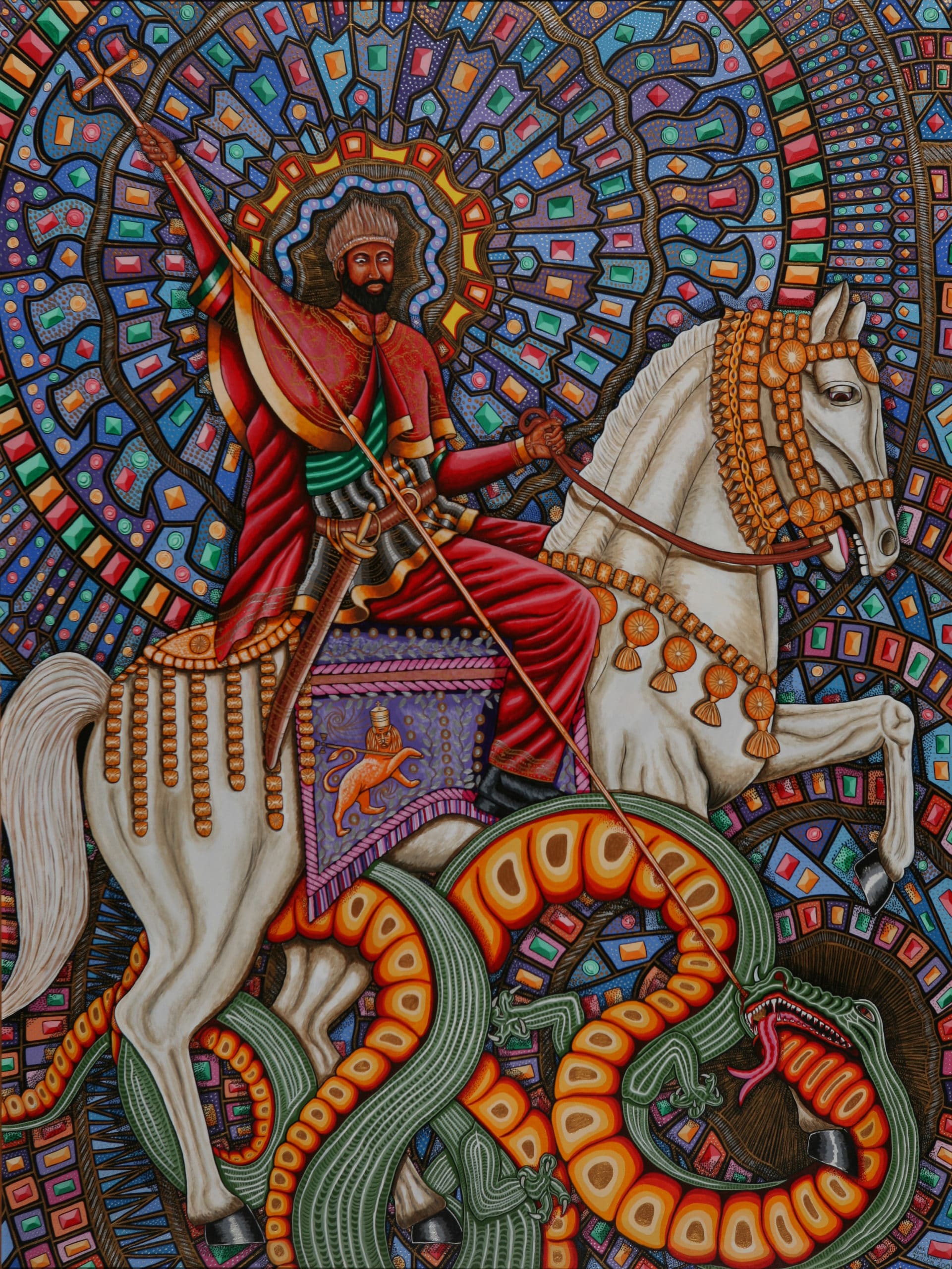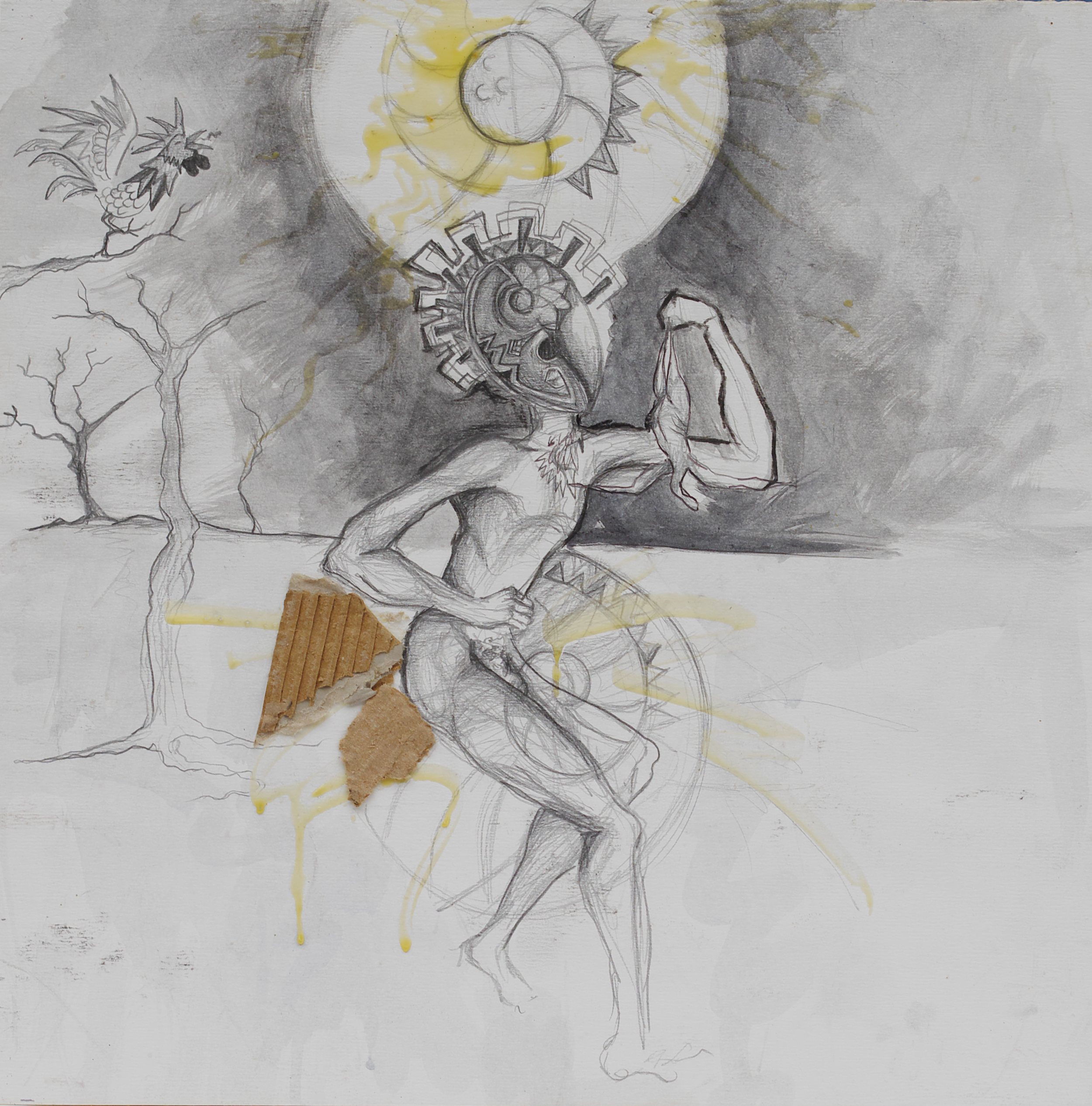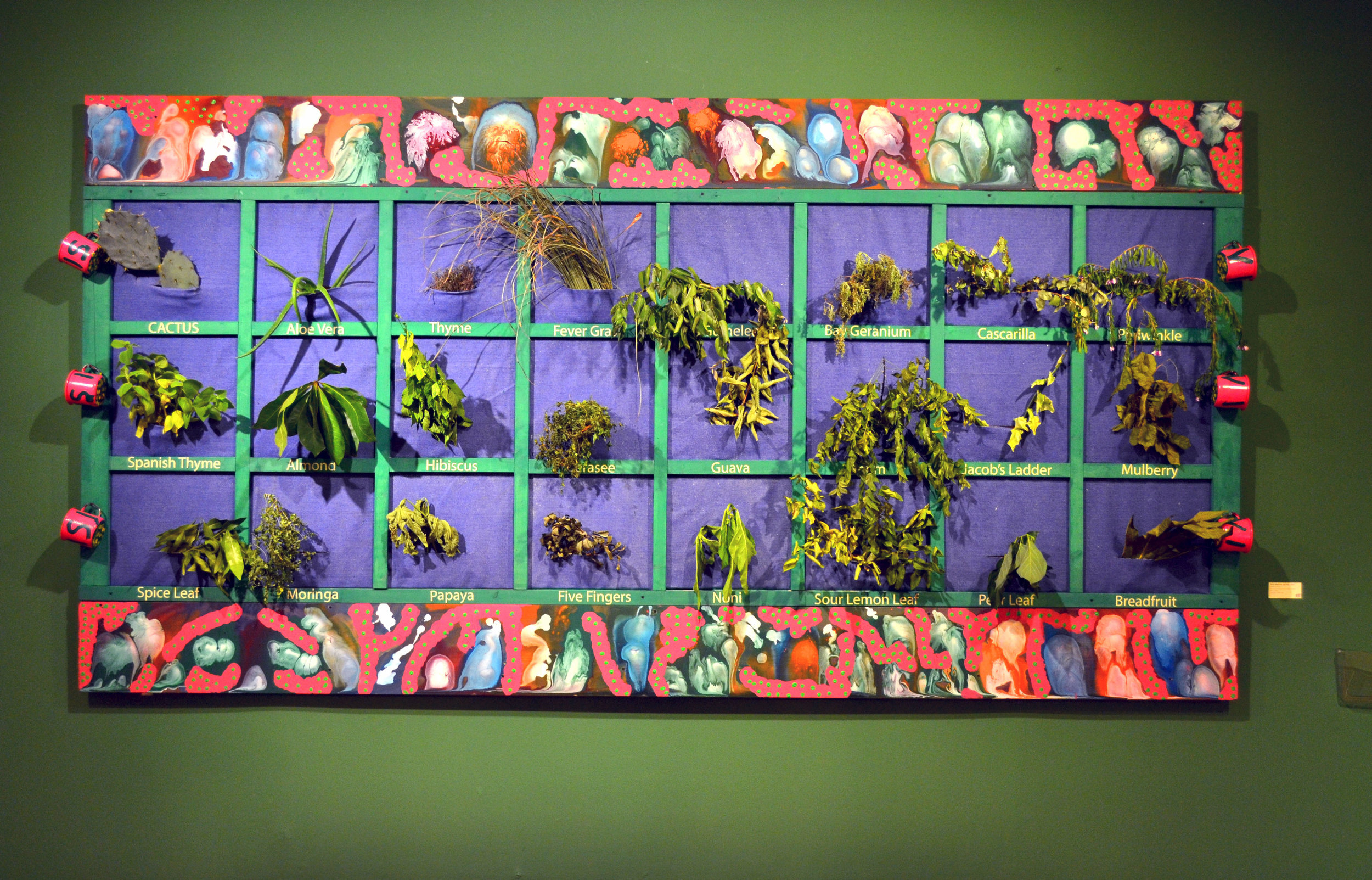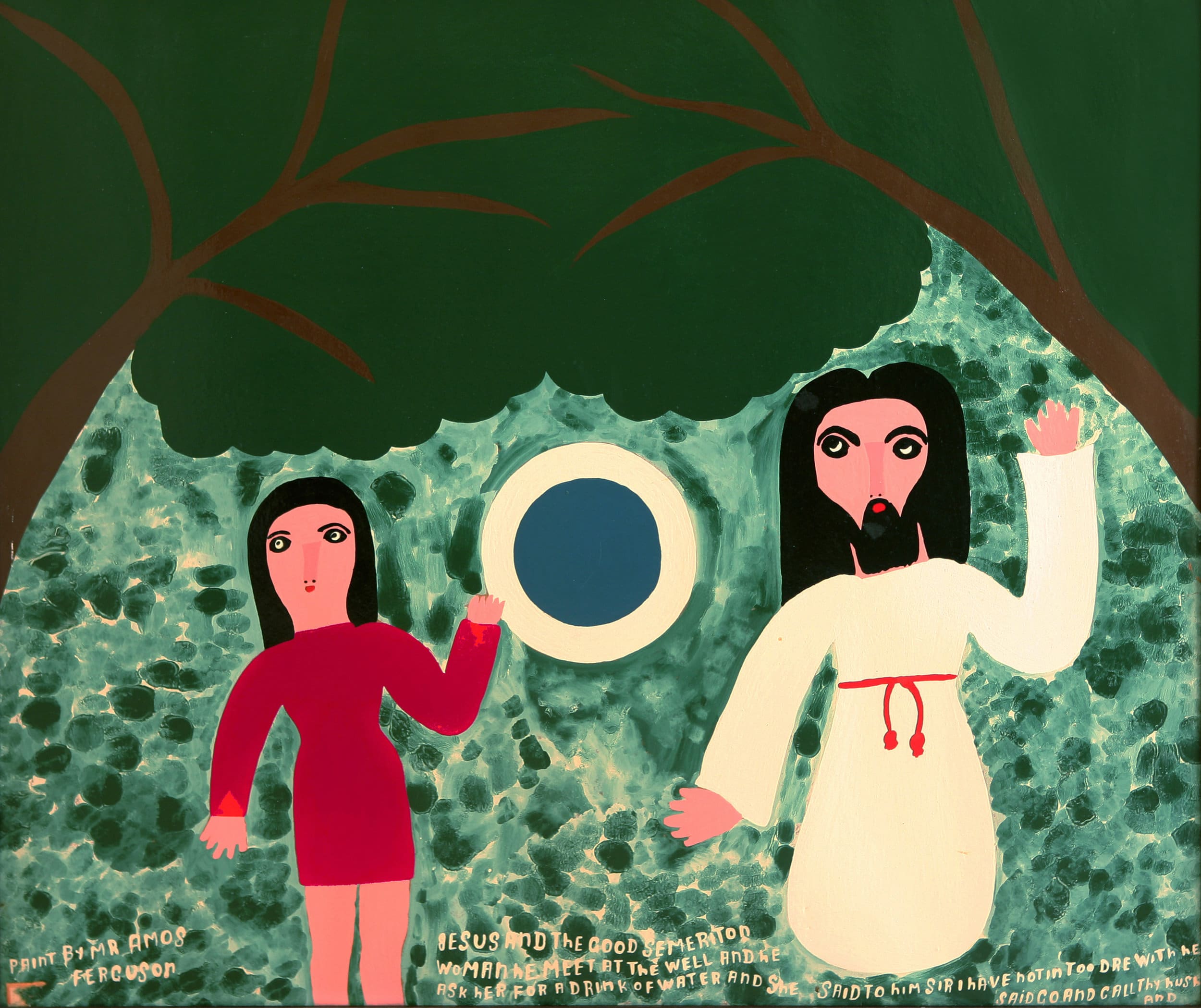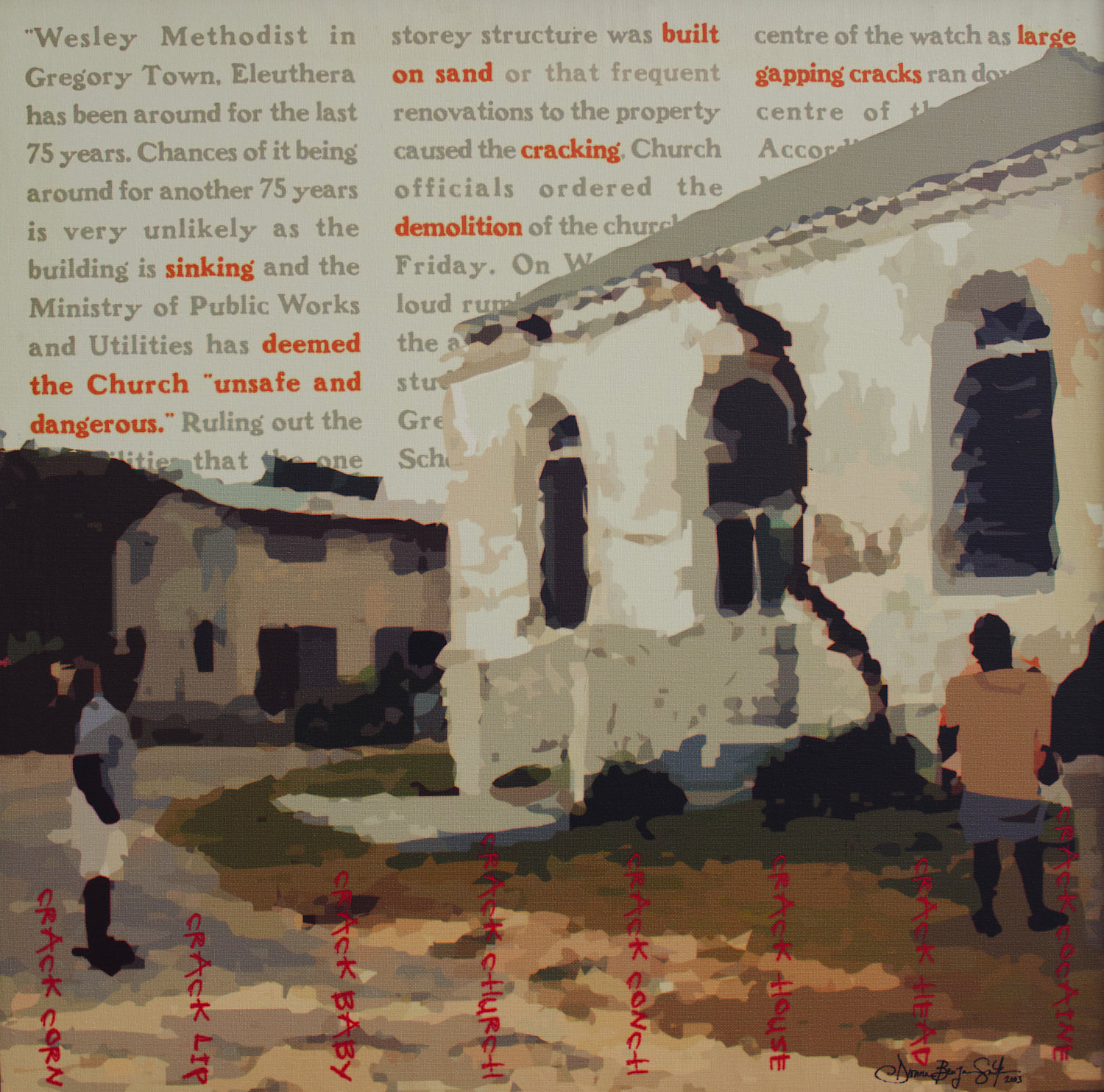The musical stylings of Bahamian favourite Phil Stubbs, no doubt inspired by the Nat King Cole classic, in this story of the monkey and the buzzard, speak to fable, myth and reality. Amos Ferguson was also quite clearly inspired by this story, as we see in his painting “The Bussett and the Monkey” (1991), currently on display in central Andros as part of the NAGB’s Inter-Island Traveling Exhibition “TRANS: A Migration of Identity”.
All posts tagged: Religion
“Defender of the Faith”: Rembrandt Taylor’s Dragon-slayer.
By Natalie Willis. Rembrandt Taylor is truly a master of his craft. His meticulous attention to lines and cell-shaded blocks of colour is testament to his skill. His body of artwork generally contain references to Exodus, to Black kings and queens, to religion, and his beliefs as Rastafari are clear and given deference. The religious and social movement, which began in the 1930s in Jamaica, gives rich territory for explorations of faith and identity, of self, and Taylor doesn’t shy away from re-framing the conversation to suit his roots.
In this vein of celebration of Black histories of faith, “Defender of the Faith” (2001)—depicting St. George slaying the mythical dragon—would seem to be something of a contradiction. Why on Garvey’s green earth would a Rasta paint the patron saint of England in such detail? The image is iconic in art history, and the story is popular not just in England but across Europe – oddly enough, particularly in Russia and Georgia. Saint George, in Georgia, who’d have thunk it?
Majority Rule: A Snapshot of Our Identity
By Dr Ian Bethell-Bennett. The Bahamas, according to the discourse, is a Black country. Majority Rule was established in 1967 and, since then, the language of nationalism has been extremely narrow, exclusive and definitive. Before the power of the majority was inculcated into the halls of Parliament, the language was very different, and usually overlooked the Black population, except as inferior subordinates. However, the face of The Bahamas, while changing, has changed little when seen through messages deployed through art. Yes, art has evolved and developed. The understanding that the Majority are people too, after the end of slavery and the permitting of souls into Black folk was not as earth shattering as one might have expected. The artistic document, though, speaks of differences and similarities of seeing and unseeing that depends little on one’s majority or minority status, but rather on the depth and wealth of one’s artistic practice. Many artists chose to include the more comprehensive and complete vision and voice of The Bahamas. Some chose to ignore or exclude. The nationalist discourse chose to do the latter.
Spirituality without religion and religion without spirituality? The magic meeting of both
Amos Ferguson’s “Jesus and the Good Semeriton” (nd): The Colour of God and Histories of Faith
From the Collection: “Built on Sand” (2003) by Dionne Benjamin-Smith
By Natalie Willis.“Built on Sand,” (2003) by Dionne Benjamin-Smith, is in some ways the sister work to “Bishops, bishops everywhere and not a drop to drink,” (2003). Both works are of the same dimensions, which instantly makes us as viewers try to compare them and view them in the same plane when they are placed near each other, but, it is the critique and use of religion as their subject that makes them read like chapters in a book, feeding into each other and helping to inform a greater whole.
From the Collection: ‘Bishops, bishops everywhere and not a drop to drink’ (2003) by Dionne Benjamin-Smith
By Natalie Willis.Works dealing with the divine, with Christianity, with the spiritual, are very much rooted in what we consider to be part of our representation of Bahamianness. In looking to the work of Dionne Benjamin-Smith, an artist and graphic designer known for her pithy and no-holds-barred practice – and very informative and inclusive newsletter designed and created by herself and her partner – we can see a proudly proclaimed Bahamian woman who identifies with her Christianity taking acute aim at problems with the way we view religion in our country.

